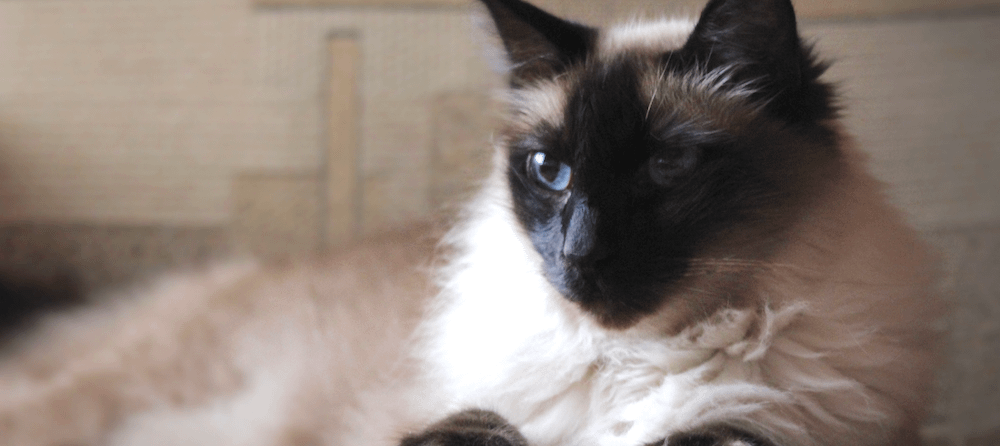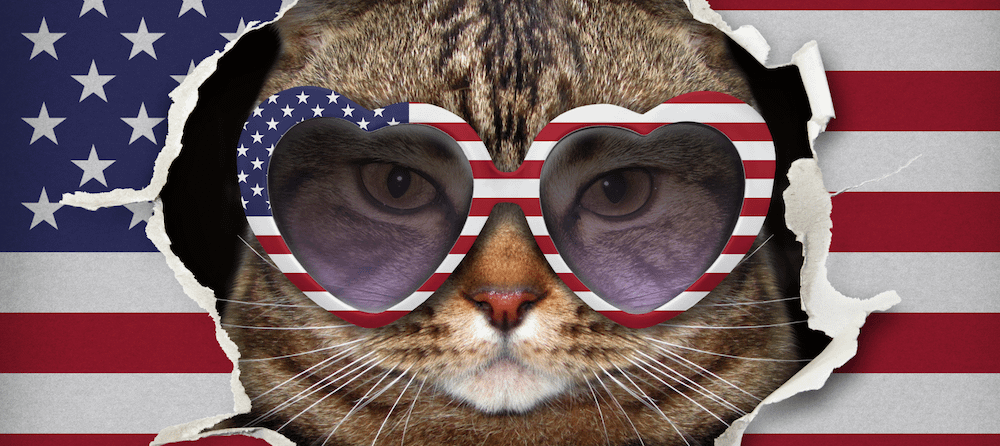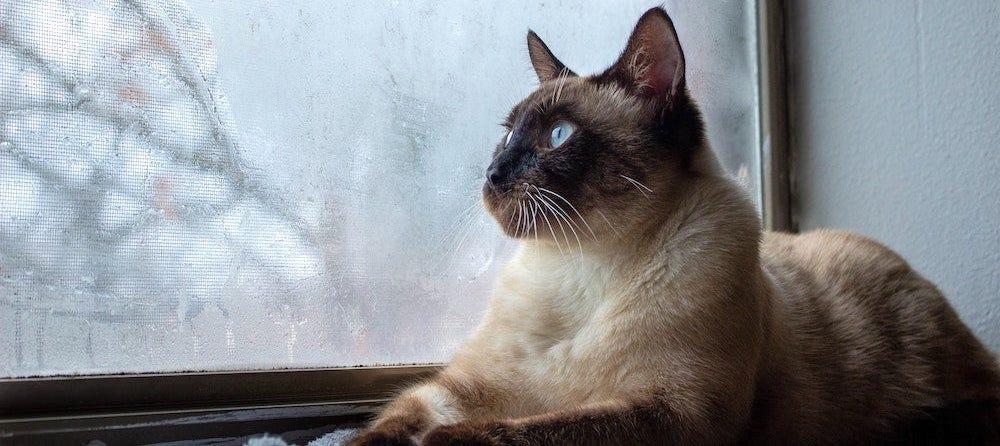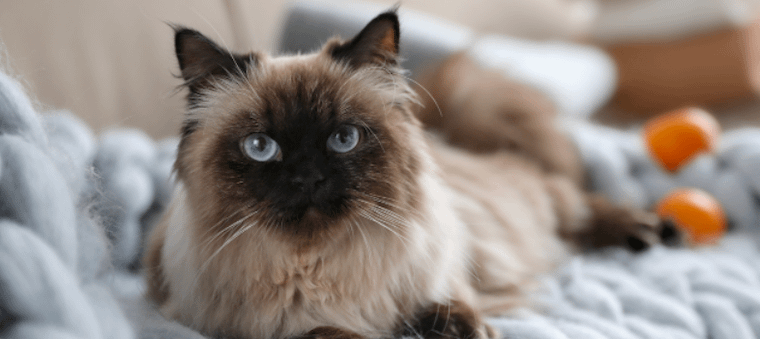Don’t mistake this beautiful and luxurious-looking cat for a haute couture fur rug—they are, in fact, a real animal. With their long, silky hair, the Balinese stands out from other cat breeds. But they also look a little like one of our other favorite chic breeds.
Which stylish breed do these cats look like, you ask? That would be the popular and beloved Siamese cat. The Balinese cat is essentially a fluffy Siamese cat, but don’t let this fool you. While very similar in coloring and personality to the Siamese, the Balinese cats are considered a distinct breed with traits that set them apart from their kitty cousins.
Like the idea of a Siamese cat but love the allure of a long-haired cat? Read on to learn more about the Balinese and what they have to offer you and your family.
| Balinese cat | ...at a glance |
|---|---|
| Personality | Loving, demanding, vocal |
| Life expectancy | 15-20 years |
| Weight | 6-11 lbs |
| Coat & colors | Long, silky; colorpoint |
| Energy level | High |
| Affection level | High |
| Friendliness | High |
| Shedding level | Medium |
| Required grooming | Low |
Overview of a Balinese cat
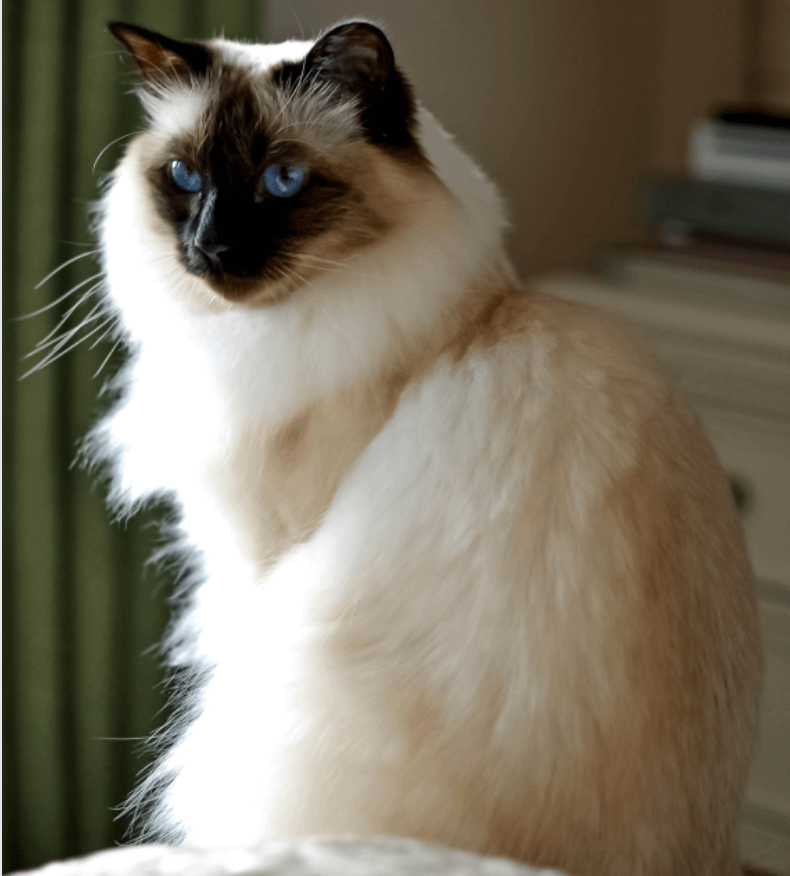
The Balinese cat looks larger than they really are because of their long coat, but they are considered medium-sized cats. When you lift your Balinese you might expect them to be heavier than they actually are—that’s the magic of a luxurious coat at work! They are athletic, strong, and well-toned underneath all of that fur.
They have wedge-shaped heads with almond-shaped eyes and a long nose. Typically, male Balinese are larger than female Balinese.
Weight
These cats aren’t compact, but rather svelte and slender. Balinese cats typically weigh between 6 and 11 pounds. Although they are muscular, they are lean and flexible, so their weight is distributed evenly.
Length
The Balinese cat can be as long as 18 inches from the tips of their nose to the ends of their tails. Most parts of the Balinese are described as long and slender, giving them more length than some other breeds.
Coat
The Balinese cat’s coat length sets them apart from the short-haired Siamese cat breed. The long-haired gene is a recessive gene that will only show if both parents carry it and it expresses itself.
This coat is semi-long to long and silky, and usually displays as a point pattern. Balinese cats’ coats can be of various point colors, including lilac point, chocolate point, seal point, and blue point.
The Balinese cat’s point colors will also be clearly defined, with their faces, large ears, paws, and plumed tails standing out as darker than the rest of their body.
Life expectancy
Balinese cats are typically very healthy, although it’s still important to take them in for regular veterinary check-ups. These cats maintain good health on their own but are vocal enough to let you know when something is wrong. In general, Balinese cats can live up to 20 years as your furry best friend.
History of the Balinese cat
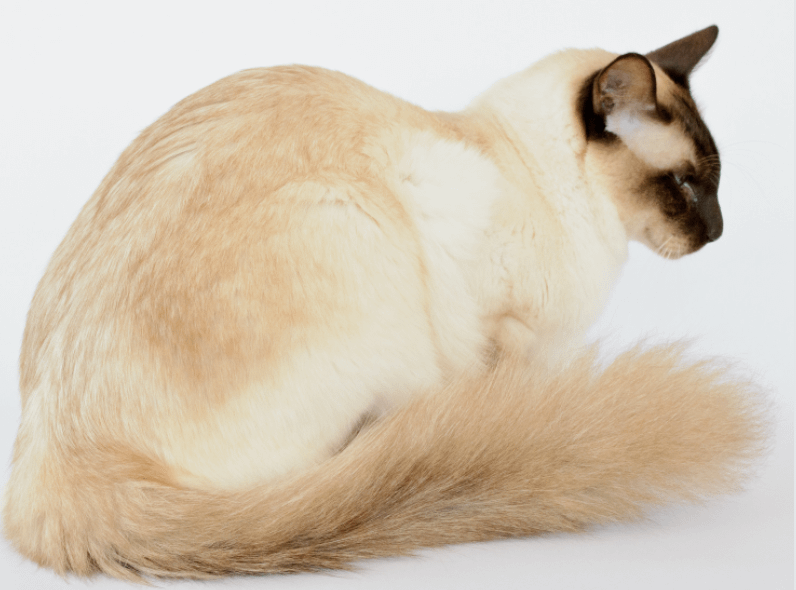
Despite their name, the Balinese cat does not originate from Bali. This breed actually originated in the United States. In the 1940s, a Siamese cat had a litter of kittens, and one was born with long hair. This long-haired Siamese kitten was a natural mutation that resulted in a beautiful cat with silky fur. So this cat breed is effectively a fluffy Siamese cat.
After quickly becoming obsessed with the long-haired kitten, Siamese breeders—including New York’s Helen Smith and California’s Sylvia Holland and Marion Dorsey—started a breeding program to preserve this new long-haired breed.
Because this is a natural mutation—and long hair and short hair are often seen as variations of each other—some don’t view the Balinese as a new breed. Instead, they consider the Balinese as the long-haired version of the Siamese.
However, many cat associations don't just view these cats a a fluffy Siamese but also recognize the Balinese as a separate breed, such as the Cat Fanciers' Association (CFA). The Balinese cat is a well-loved breed, even if they aren’t especially common. The Balinese isn’t considered one of the more popular cat breeds, but they’ll quickly rise to the top of your list once you spend some time with these unique cats.
Characteristics
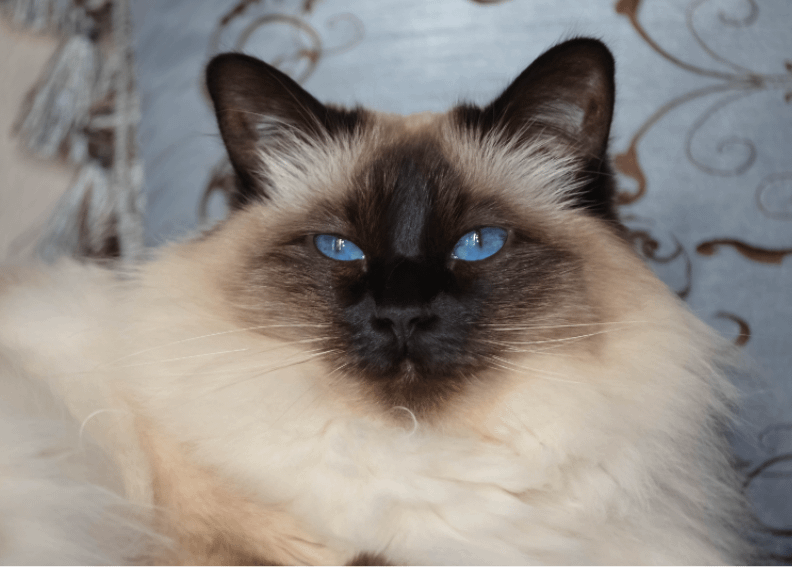
Balinese cats are best known for their long, silky coat and pointed patterning. They resemble a fluffy Siamese (if a Siamese magically grew several inches of hair).
The Balinese cat has deep, vivid blue eyes that seem to stare into the depths of your soul. Their eyes are almond-shaped and angular, and they have a straight nose that adds to their seriousness. Sometimes, Balinese kittens are born with a condition called Strabismus that lends them interesting crossed eyes.
There is usually a noticeable contrast between the fur color of a Balinese cat’s body and points, with their points being much darker than their bodies. The Balinese cat does not have an undercoat, which makes shedding light and grooming easier.
Personality traits
The Balinese cat has a strong and independent personality, but, like the Siamese, they can be quite chatty. They are playful and youthful throughout their lives, so you will be purchasing new toys quite often to keep them properly entertained.
While they are independent and curious about their surroundings, their favorite place to be is near their humans. They’ll want to learn tricks and play games to show off, and they love positive reinforcement.
Your Balinese will likely form one extremely strong bond with someone in the household, followed by other bonds that are strong but not as determined. If you’re the chosen one, feel very thankful!
Whether you’re the Balinese’s BFF or another member of the household, they’ll still be happy to see you every day and interact with you often.
These little angels are devoted to people who are devoted to them. They can become sad if you are away for too long, so keep your work schedule in mind before adopting this breed. They require a lot of attention—and for some, it’s too much to keep up with.
The Balinese are friendly and welcoming, making them an ideal family pet. When introduced properly, they get along well with other cats, dogs, and children. They have a great temperament and love to play. The more people and pets around, the happier your Balinese will be.
Caring for a Balinese cat
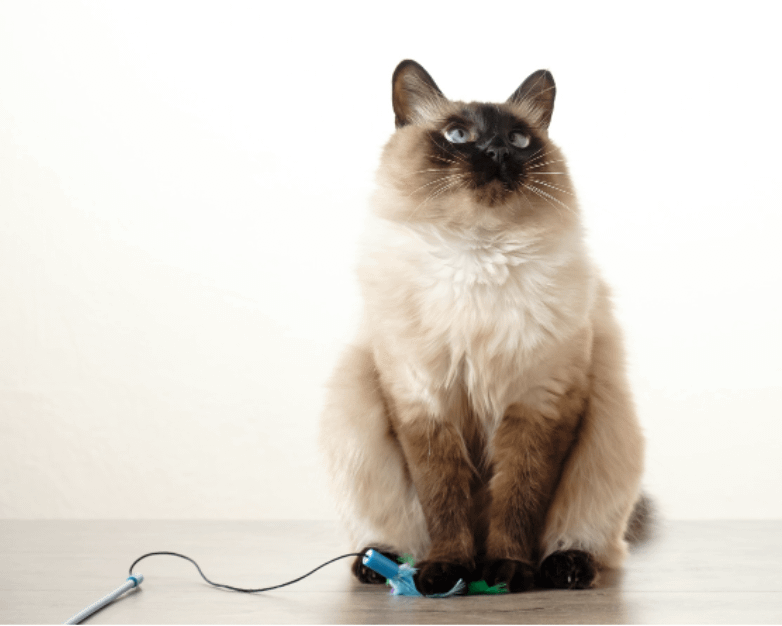
Balinese cats are relatively low maintenance when it comes to their care. They don’t require too much grooming because they have no undercoat and don’t shed as much.
Balinese cats are active and need proper exercise and nutrition to maintain a healthy body weight. This intelligent cat loves to play and will need plenty of toys and environmental enrichment at their disposal.
Their long fur can get dirty, so it’s important to keep your litter box nice and tidy. With the help of a self-cleaning litter box like Litter-Robot, you don’t have to worry about your Balinese’s fur dragging in their box.
You will want to trim your cat’s nails habitually, and clean their teeth (or have them cleaned at the vet) regularly to avoid dental issues.
Are Balinese cats hypoallergenic?
Like the Siberian cat, Balinese cats carry less of the protein Fel d 1, which causes cat allergies in some people. This protein is found in a cat’s saliva, urine, and dander. Although no cat is 100% hypoallergenic, the Balinese is one of the top choices for pet parents who are allergy sufferers.
Possible health issues
Taking care of a Balinese isn’t too difficult, as they are typically healthy cats. Still, they can develop many of the same hereditary health problems as Siamese cats, such as liver amyloidosis.
Balinese are also more prone to eye problems, including progressive retinal atrophy (a condition where photoreceptor cells degenerate over time, leading to blindness) and glaucoma (when watery fluid is contained in the front part of the eye and is unable to be drained normally, which can result in partial or total blindness).
They can also develop asthma or other respiratory issues. However, it’s easy to monitor their health through regular check-ups with your veterinarian.
Adopting a Balinese cat
When you adopt a Balinese, you need to be ready to put in the effort to keep them happy and entertained. You don’t want your Balinese becoming sad or lonely. You’ll want them to know you have their best interests in mind, as these cats are highly intuitive and love to communicate with you about their needs.
If you’re open to listening and working with a Balinese, you will find that they are a deeply loving and amazing cat breed. You’ll have so many funny stories and adorable pictures to share!
Sources:
